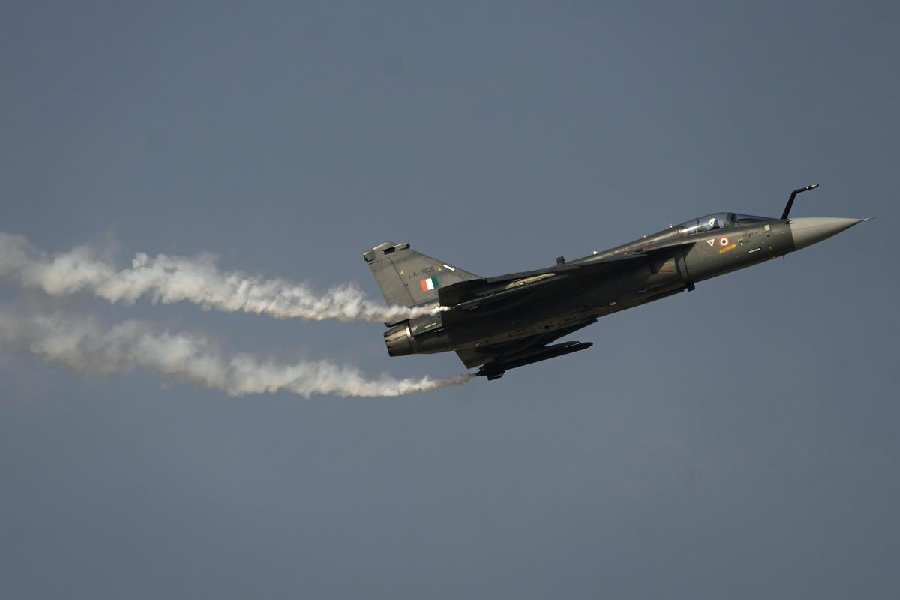Lieutenant-General Rahul R. Singh, deputy chief of army staff, stood before the defence industry at the FICCI seminar on “New Age Military Technologies” in July 2025, weeks after Operation Sindoor concluded. He described a telling episode from April before the operation had unfolded. He had asked India’s drone manufacturers a straightforward question. How many of you can provide equipment within the stipulated time? Many hands went up with confidence. Then he called them back after one week. Nothing came by, he said. Not a single piece of equipment.
The reason was that India’s manufacturers remained dependent on critical components sourced from outside the country. When those imports did not materialise, nothing could be delivered. The hands that went up in April came down empty a week later. This deafening silence told everything about the state of India’s indigenous defence manufacturing capabilities in the private sector today.
The chief of defence staff, General Anil Chauhan, stood before the defence industry this month at a brainstorming session and cut through the self-reliance rhetoric sharply without any apology or ambiguity whatsoever. When the army recently scouted for emergency procurement orders, it found, he said bluntly to industry leaders, that “most of the people have over-promised things and they have failed to deliver in that time frame. Defence reform is not a one-way street. Industry will have to be truthful about their capabilities to us. You cannot leave us in a lurch. You sign a contract and you do not deliver at that particular time. It is a capability that is being lost.” The message was unmistakable and cutting.
Most damning was his observation on false claims of indigenous content. “A lot of industries say this is 70 per cent indigenous, but actually, if you find out, it is not. You have to be truthful about your indigenous capabilities. There could be security related issues,” he said with evident frustration and deep concern for national security. His message was crystalline and unambiguous. India’s private defence sector is not merely inefficient or slow. It is fundamentally dishonest, with serious implications for India’s national security and strategic autonomy.
Not that public sector defence manufacturing is any better. Air Chief Marshal A.P. Singh had expressed sharp frustration at Aero India 2025 about Hindustan Aeronautics Limited, the manufacturer of the Tejas fighter jet. “No confidence,” he said bluntly. The Tejas Mk 1A jets, supposed to be delivered by February 2025, remain pending months later. Singh expressed disgust with the casual ‘Ho jaayega (it will happen)’ attitude that pervades HAL’s organisational culture and working philosophy. He said HAL was not operating in mission mode. Four decades of effort since 1984 and India’s fourth-generation fighter project continues to languish way behind schedule. Compare this dispiriting record to China, which
had flown prototypes of its sixth-generation fighters with advanced capabilities last year.
These episodes expose the growing gap between the much-vaunted Atmanirbhar Bharat rhetoric of Prime Minister Narendra Modi and the observable reality of India’s defence manufacturing sector. The rhetoric has been relentless since 2014. Atmanirbharta. Self-reliance. Make in India. Localisation. Indigenous content. Yet each military operation and each manufacturing delay tells a starkly different story of aspirations unfulfilled and promises broken repeatedly.
During Operation Sindoor, much was made of India’s deployment of the BrahMos missile and the S-400 air defence system. These weapons were presented as vindications of Indian military prowess and technological achievement. The reality is fundamentally different. BrahMos cannot fire without Russian components. Russia maintains a 49.5% stake in the BrahMos Aerospace and supplies critical components, including the ramjet engine. The S-400 system that provided India’s air defence umbrella is entirely Russian. Delhi cannot even prod Moscow to deliver the already contracted batteries on time.
Yet there was a more telling absence from Operation Sindoor’s narrative. India’s indigenously manufactured Tejas fighter was not deployed in any meaningful strike role. This is the centrepiece of India’s indigenous fighter programme. When military planners needed results, they reached for the French Rafale, the Russian Su-30 MKI, and the BrahMos. They did not reach for the Tejas.
This does not have anything to do with what happened on November 21 at the Dubai Air Show when a Tejas crashed during aerobatic manoeuvres and the fighter pilot died. Questions raised about HAL’s manufacturing and maintenance excellence can’t be answered so soon after the crash without a detailed investigation report being made public. Tejas’s capabilities are what they are and they are known to all stakeholders. The point is about project delays and HAL’s inability to stick to its schedule.
The Tejas depends on critical imported components throughout its airframe and systems. It uses the American General Electric F404-IN20 engine exclusively, a variant of the F404 engine developed for advanced trainers and light combat aircraft. India has never developed its own combat-worthy turbofan engine for modern fighter jets.
The Kaveri Project, launched in 1986, failed to meet requirements and was officially delinked from the Tejas programme in 2008.
Jet engine development is a complex process. Currently, only four countries have the demonstrated capability to design and produce modern military jet engines from concept to flight. Even China’s claims about developing a top-class jet engine are contested. More countries possess nuclear weapons
than possess the ability to develop
modern jet engines. Think about that for a moment. That’s why no country, however friendly, is ever going to transfer the complete engine manufacturing technology to India.
But India’s troubles run beyond one item or one platform. Defence indigenisation is a wicked problem as these recent statements by the military brass have underscored. It emerges from technology, industrialisation, organisational capability, political will and geopolitical constraints all in constant tension. There is no simple solution available. Boastful announcements, catchy slogans and PR gimmicks have only harmed the cause.
India must separate design and production accountability, invest massively in R&D, rationalise procurement systematically, build the industrial base comprehensively, and develop institutional discipline rigorously. Until these structural changes occur, the gap between Modi’s Atmanirbhar Bharat and India’s defence manufacturing reality will persist.
When the share of manufacturing in India’s GDP has itself come down under Modi, how can defence manufacturing take off? Unless Indians elect the political leadership they deserve, defence manufacturing — like Delhi’s pollution — will remain the nation’s most glaring governance failure.
Sushant Singh is lecturer at Yale University











